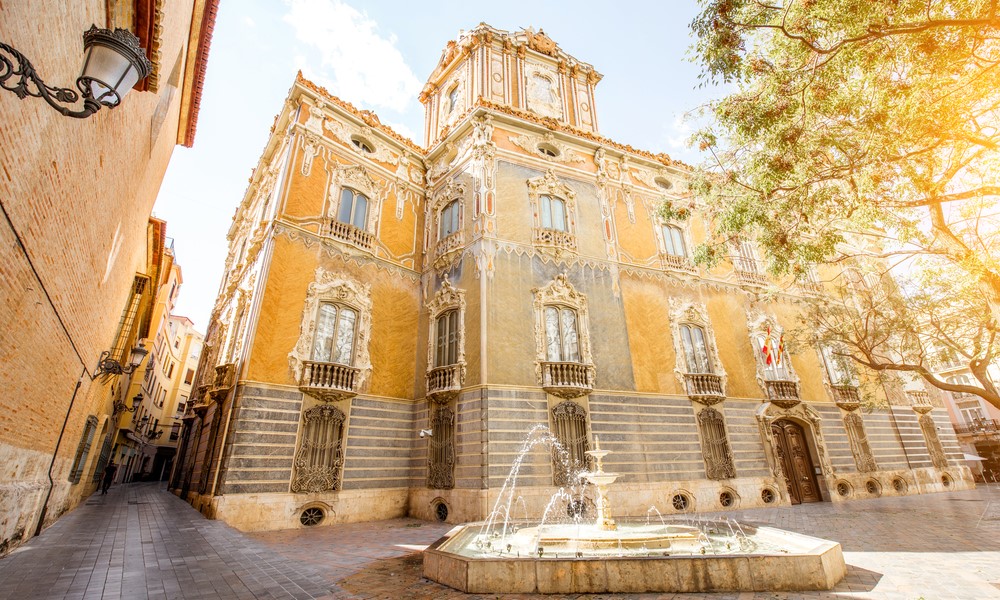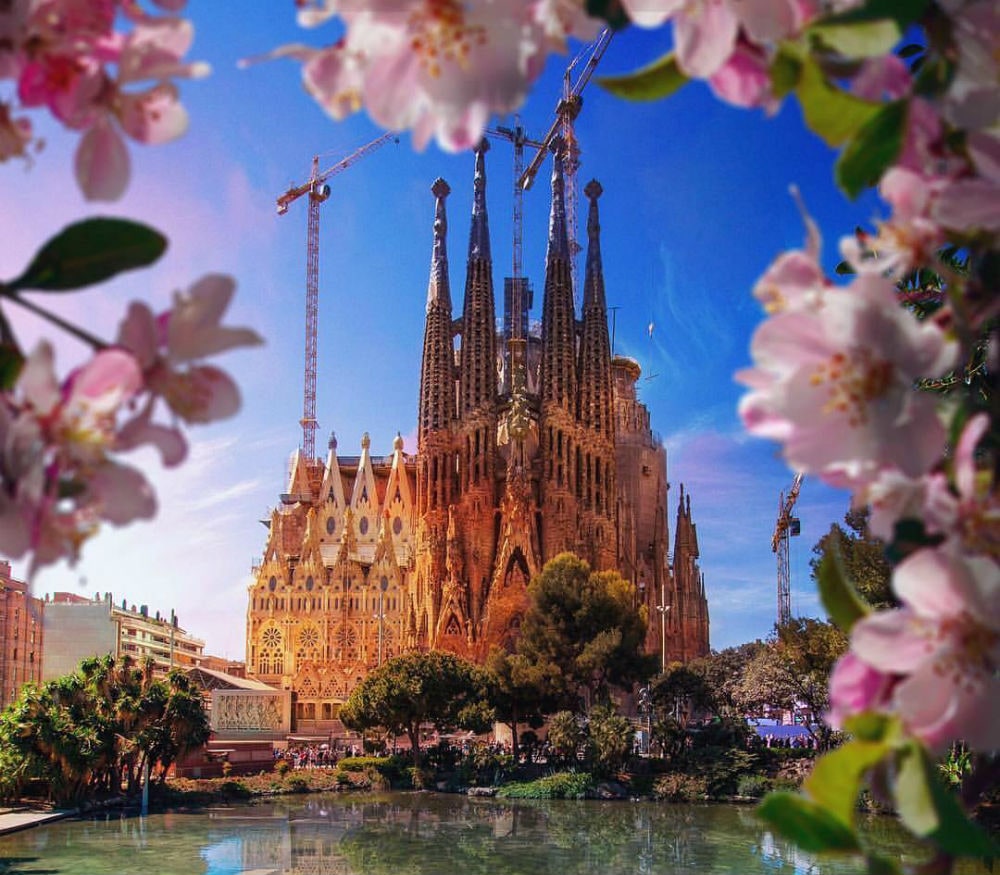Valencia is the third largest city in Spain and the birthplace of paella. The city is often overlooked because of Barcelona or Alicante, although this place is rich in no less striking architecture, delicious tapas, local wine and cider, green parks and wide beaches. In addition, there are much fewer tourists here than in more popular resorts, and prices are much lower.
Valencia is good to visit at any time of the year: in winter the temperature is within +15-20 °C, and in summer there are jumps up to +40 °C. But the streets are designed so that the houses provide shade, and the wide avenues are lined with trees with lush crowns. We tell you what to do in the Spanish city.
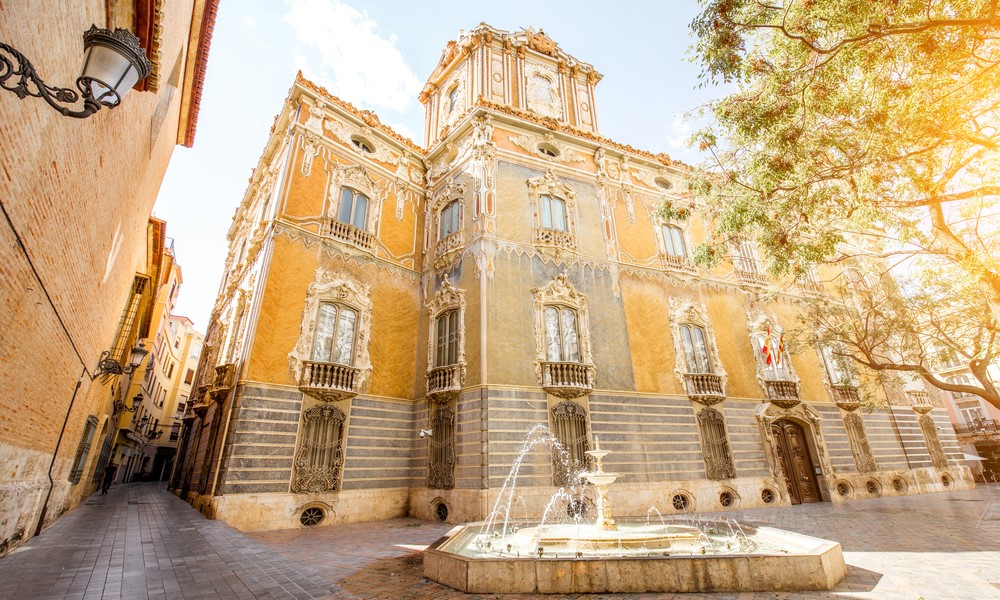
How to get there
It will be cheaper to get to Barcelona and take a bus to Valencia. They depart directly from the airport, a one-way ticket costs from 30 euros. You will spend about four hours on the way.
Where to stay
Hotel El Siglo (8.4 rating) – A small hotel in the city center with sun loungers on the roof. A night in a standard room costs from 10,500 rubles*.
Hotel Valencia Alameda 41 (9.1 rating) – stylish rooms overlooking a shady green street. Prices start from RUB 16,000* per night.
Hotel Puerta Serranos 4 sup (9.6 rating) is a new hotel, each room has its own balcony overlooking the Turia Park, the Museum of Fine Arts and the Serranos Towers. A night in the “deluxe” costs from 26,600 rubles *.
Central Market and Silk Exchange
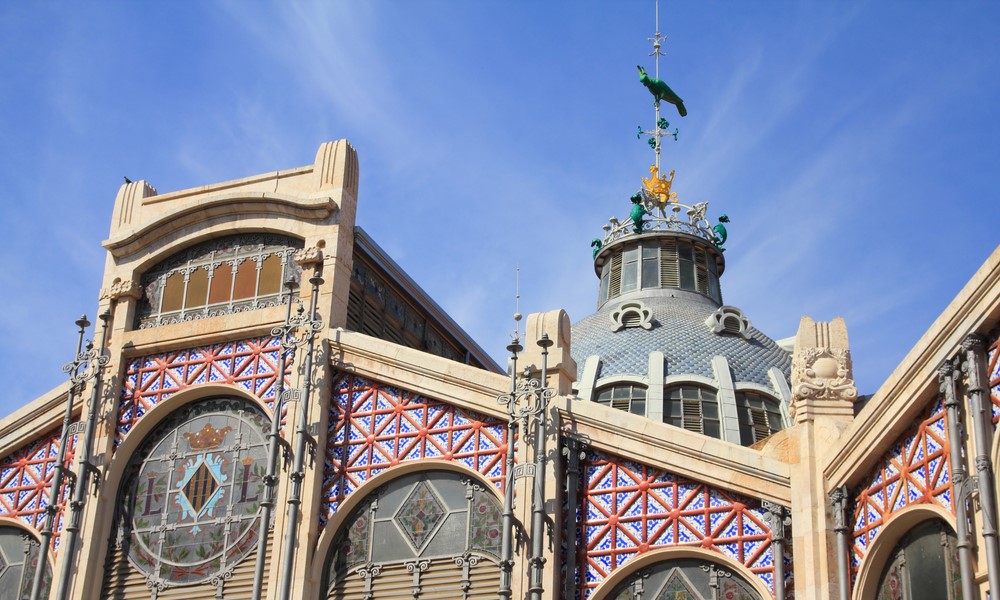
Valencia can be divided into the old and the new city. The first, more compact, is best viewed on foot, plunging into the history of architecture. The second, futuristic and spacious, is perfect for exploring by bike.
It’s good to start your trip around the old city from the Mercado Central central market – it is open from 7:30 to 15:00 (depending on the season, the time may vary), Sunday is a day off. Inside there are more than 300 stalls with fruits, vegetables and berries from local fields, meat, seafood and sweets. Here you can buy literally everything – in aquariums they sell even live eels, which will be cooked in front of your eyes. There are also corners with tapas, paella and Spanish breakfast, and with some restaurants nearby there is an agreement: for a small fee, they prepare products that you bought at the market.
It’s worth going here even if you’re not planning a snack. The building has an unusual shape: the ceiling of the market is a huge dome, painted with oranges, the main fruit of Valencia.
Across the road is the old Silk Exchange Lonja de la Seda , the entrance ticket costs two euros. If you came on Sunday and didn’t get to the market, don’t be discouraged – on this day, the entrance to the exchange is free. Inside, you can admire beautiful stained-glass windows and stone columns in the form of twisted palms.
Neighborhood Plaza de la Virgen
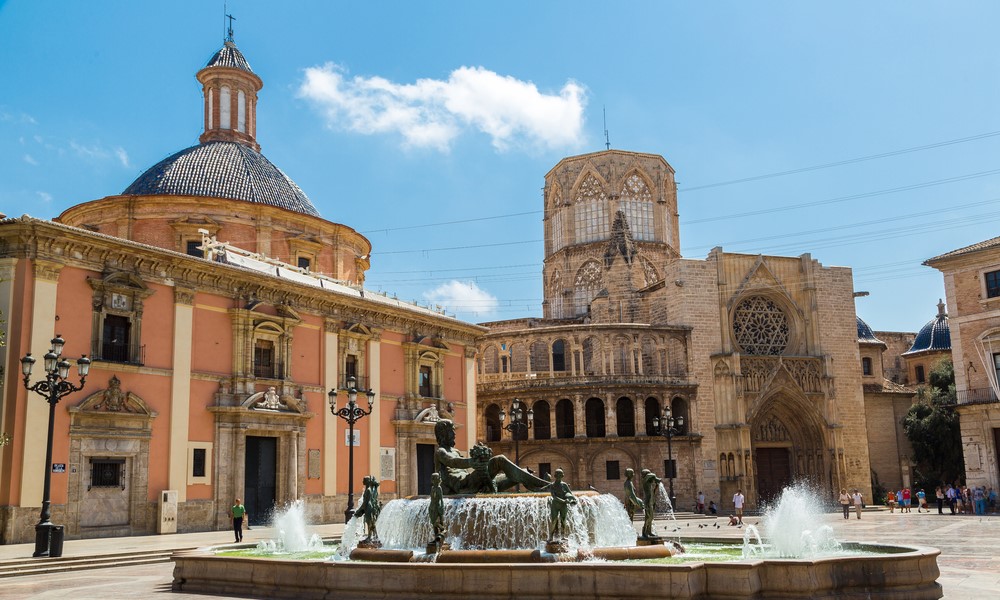
Two minutes from the Silk Exchange is the El Carmen district , where the oldest buildings of the city are adjacent to walls painted with colorful graffiti. The streets of El Carmen will lead you to the Cathedral of Valencia. For two euros you can climb the El Miguelete tower and enjoy a beautiful view of the city. Numerous roofs with blue domes are worth climbing 207 steps. If you are interested in religion, visit the cathedral – the Holy Grail is kept there.
Behind the cathedral is Plaza de la Virgen , one of the main squares in the city. During the day, it is filled with tourists who come to see the Basilica de la Virgen de los Desamparados and the statue of the patroness of Valencia inside it. After sunset, the area changes beyond recognition, the nightlife is in full swing there.
The second main square of Valencia is Plaza de la Reina , during the day it is surrounded by historical architecture and closed roller shutters of the first floors, painted with graffiti, and in the evening the place comes to life – all buildings are illuminated by spotlights, shops and restaurants open their doors, and street artists and musicians appear on the square itself.
Plaza Ayuntamiento
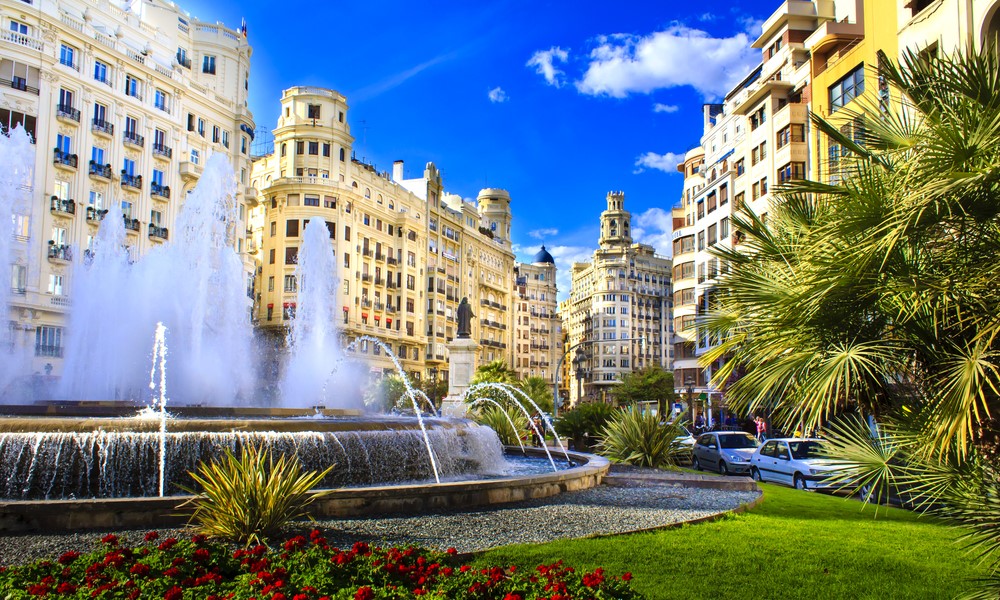
The square is located in the southern part of the old city, not far from the North Station. Unlike the other two central squares, it is surrounded by a highway, which may make it seem less cozy. Not only the Town Hall is located here, but also the impressive building of the Valencia General Post Office. All holidays are held on this square, during which it becomes completely pedestrian. And in winter, a Christmas tree is set up here and an ice rink is flooded, despite the warm weather.
Botanical Garden Jardin Botanico
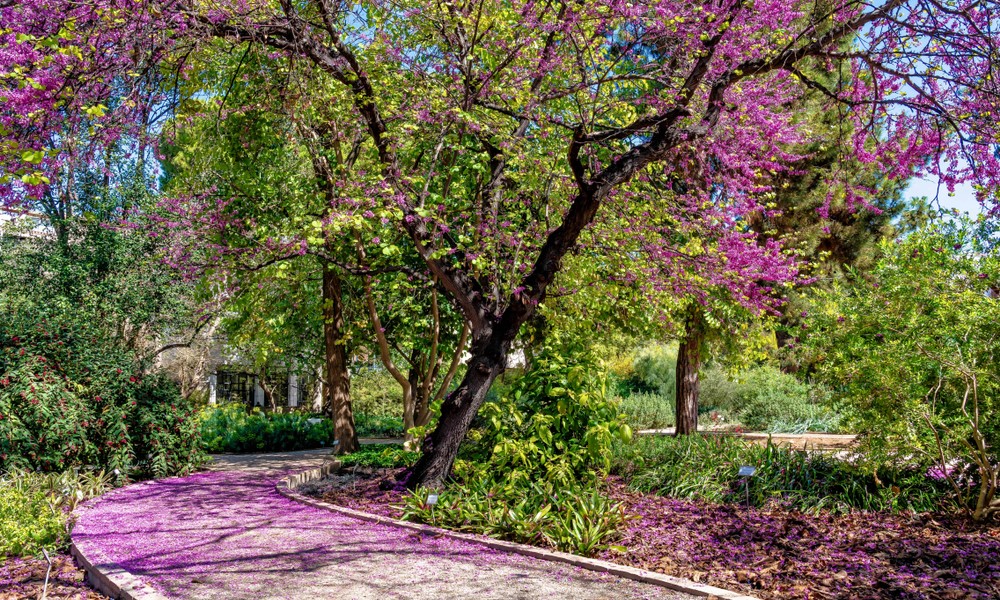
It used to be the apothecary garden of the University of Valencia, but now it has become a habitat for many animals. The botanical garden is located near the Torres de Quart gate in the western part of the city. The entrance ticket costs 2.5 euros, on the last Sunday of each month at 11 and 12 o’clock there are free tours. At the entrance you will be given a booklet in English with a detailed map. Plants are arranged in such a way that their evolution from primitive to complex forms can be traced.
Jardí del Túria and City Gates
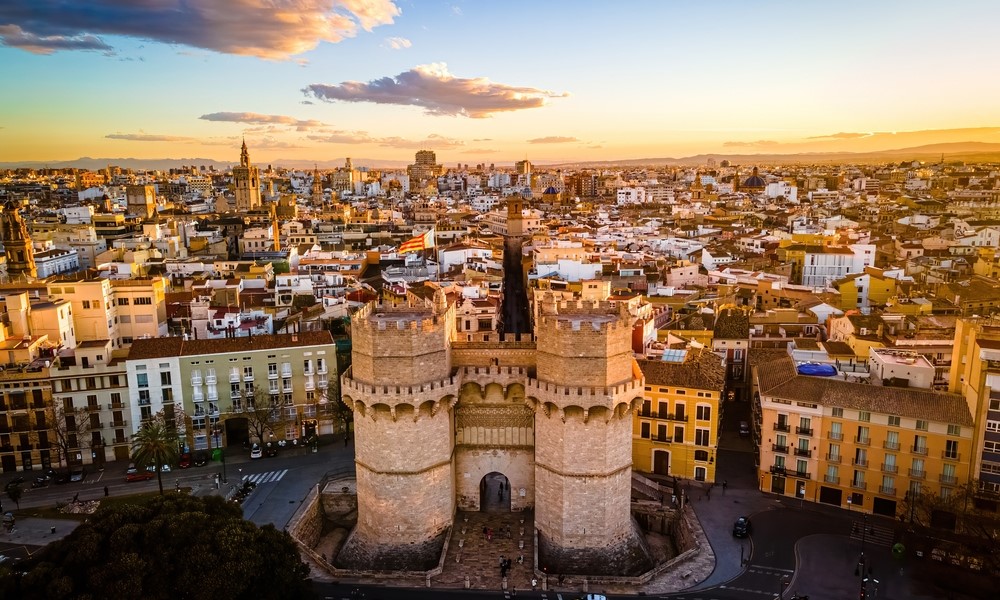
The park is best explored on a bike – its seven kilometers long area goes around Valencia and connects the old part of the city with the new one. The Túria River used to flow here, but it often overflowed its banks and was redirected. Now in its channel and under the green lush crowns of trees, a park with bridges and fountains is hidden. In the spring, you will see the flowering of baobabs here, and in the summer, admire the orange trees under the chirping of cicadas.
It is worth starting a walk in the park from the Torres de Cuart tower – this is the first city gate, which is about 600 years old. The walls have preserved traces of cannon shots, in which large parrots now nest. While walking, reach the towers of Torres de Serranos (these were the main gates of the city), and then inspect the triumphal arch Porta de la Mar. At the end of the park, a new part of the city begins.
Palace of Art and Aquarium
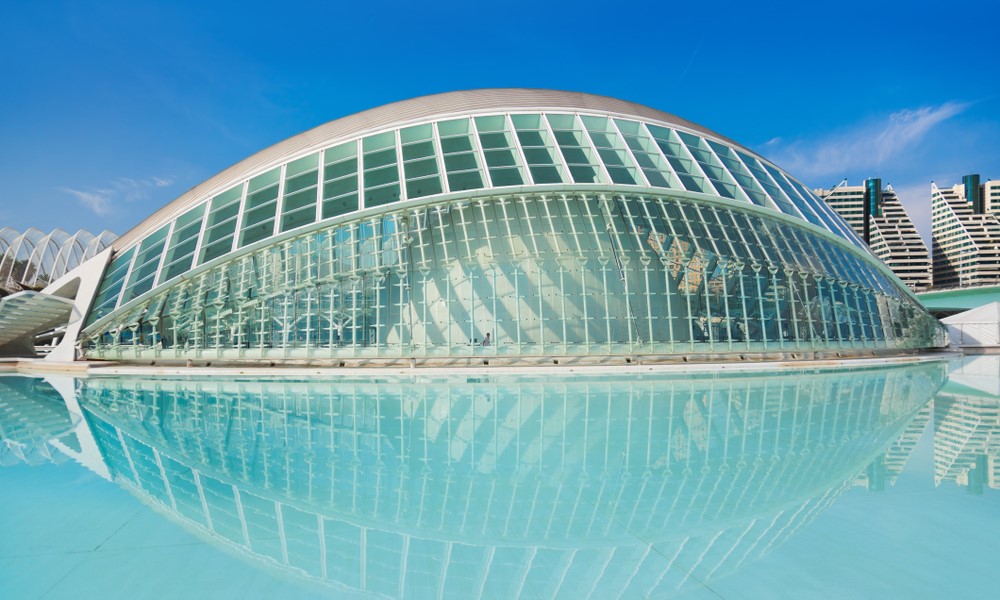
The symbol of the new city is the futuristic buildings of the City of Arts and Sciences . The architectural complex consists of three buildings: Palau de les Arts in the form of a seashell, La Hemisferic cinema in the form of an eyeball, and Museo de las Ciencias science museum , which resembles the skeleton of a whale. All this is surrounded by a swimming pool, and from May to September you can swim on the water in a sapa or kayak.
The Palau de les Arts hosts operas, drama performances, concerts and exhibitions. Near the Museo de las Ciencias, the largest oceanarium in Europe was built, where the ecosystems of the world were recreated for 500 species of fish, amphibians and marine mammals. You can save on the entrance ticket if you buy a city pass for 24, 48 or 72 hours in advance at one of the tourist centers. The card costs from 15 euros and allows you to use public transport for free and visit many museums.
Bioparc Valencia
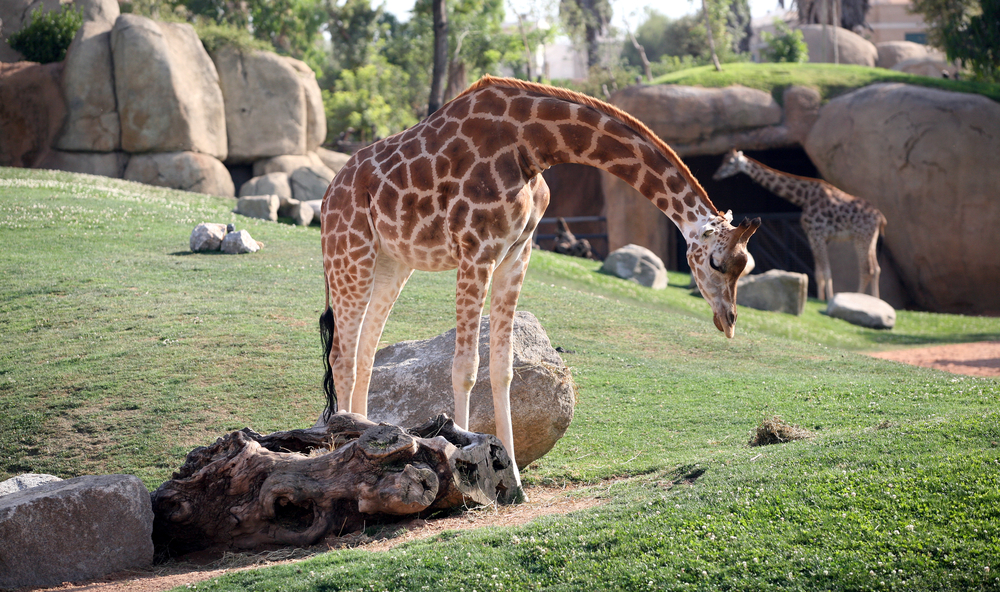
Another place where you can get acquainted with wild animals is Valencia Biopark. It has a large open-air area, but it is comfortable to walk around here even in summer, since most of the hiking trails are covered with a canopy or canopy of trees. Inside, in addition to giraffes, lions and other inhabitants of the savannah, hippos, flamingos and lemurs live – you can even enter an area where animals move freely.
At the entrance, they give out a map of the park and a sheet with the animal feeding schedule – they are distributed over time so that you can see them all, so you can come at any time. But it is better to do this no later than two hours before closing time in order to have time to bypass the entire territory. There is an entertainment program for children in the Biopark.
City beaches
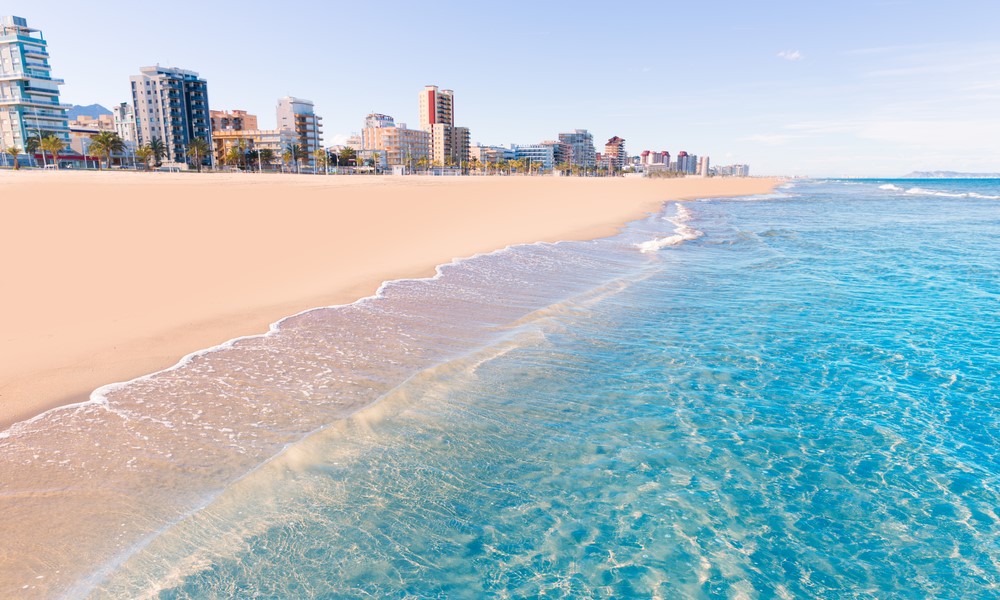
The road to the sea through the vibrant area of El Cabanyal . These colorful houses are more like Cuba than Spain. Valencia has three city beaches, and two of them, Las Arenas and Malvarossa , are interconnected. It is a long coastline with white sand and palm trees. Opposite Las Arenas beach there is a small Mercabanyal food court where you can try street food of different cuisines: bao buns, sushi, burgers. Trams number 4 and number 6 and bus number 32 go here.
A little further is Platja de la Patacona beach . It is not so crowded and there are great bars and cafes where you can eat delicious food. The entrance to the water on the coast of Valencia is very smooth, without cliffs, and the bottom is perfectly flat.
Behind Platja de la Patacona is the harbor of Port Saplatja . It does not at all look like a port in the usual way: boats and yachts are moored in canals, among which an entire area is built. There are tall bright buildings along the banks, due to which the local flavor is created. You can get there by bike or by public transport. From the city center you need to take the metro to Maritim Serreria, and then take the tram to the final stop.
Wild beach
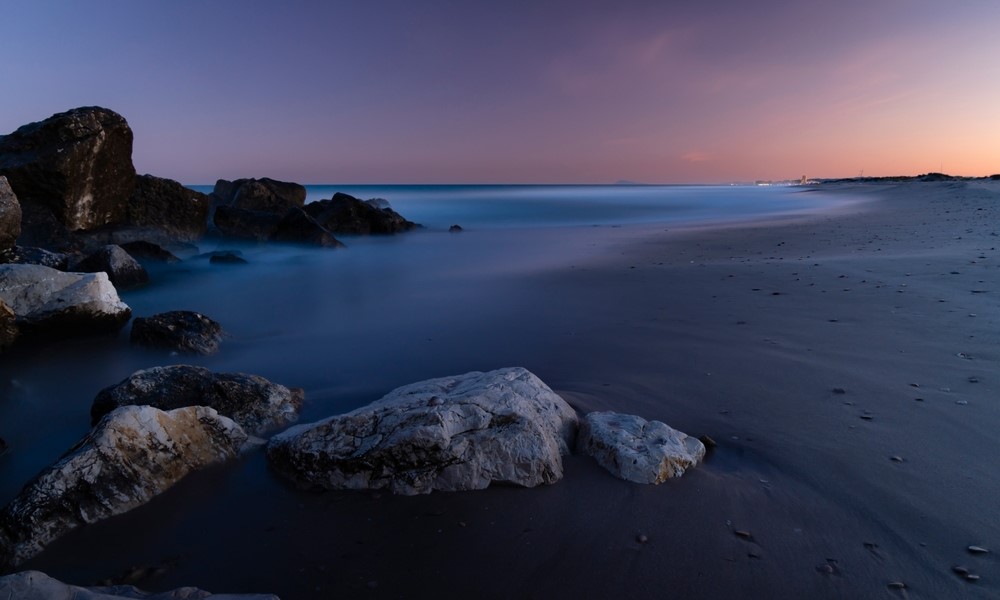
There are three more beaches nearby: the deserted urban Playa de Pinedo and Playa De La Devesa Del Saler and, finally, the wild El Saler . The first two are served by buses number 14 and number 15. El Saler is located 11 km from Valencia, you can get there by bus number 107 or combine with a visit to Parc Natural de l’Albufera , which is very close.
Locals love El Saler for its amazing location: it is surrounded by dunes and pine forests, the coast is covered with white fine sand, and the water is clear and blue.
Parc Natural de l’Albufera
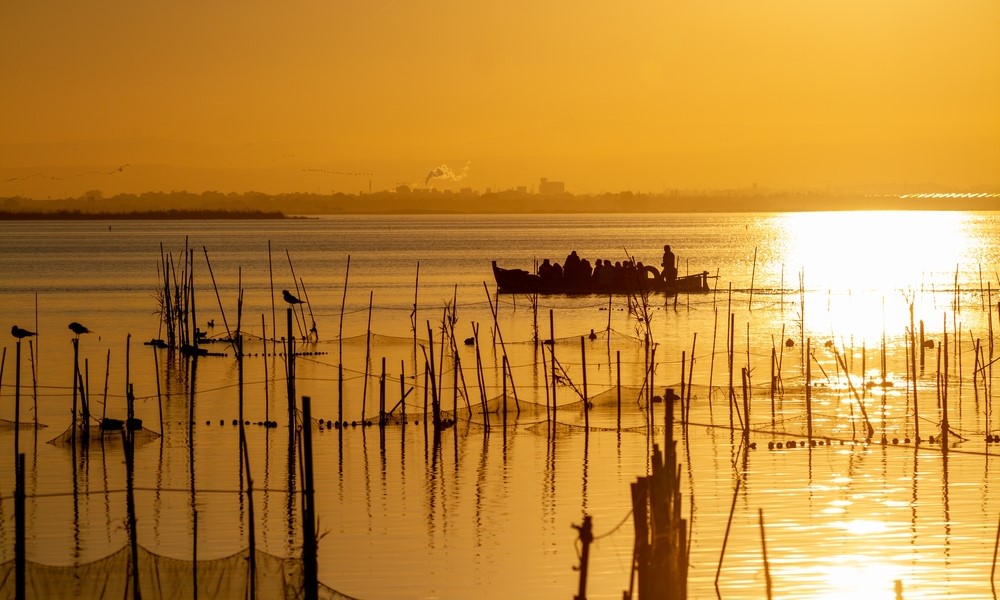
The largest natural park in Valencia lies around the lake of the same name. To get acquainted with the local flora and fauna, choose one of the equipped hiking trails – it is dangerous to go off them, because there are many swampy areas in the park. Herons, storks and even flamingos live on the lake. And in the cafe in the park, you can try paella or the national dish a l’all and pebre, which is made from eel from the local lagoon.
Toward evening, take a boat and watch the sunset – the locals even call the lake a mirror of the sun. Boaters take from three euros, depending on the mood, time of day and number of people.
Parc Natural de la Serra Calderona
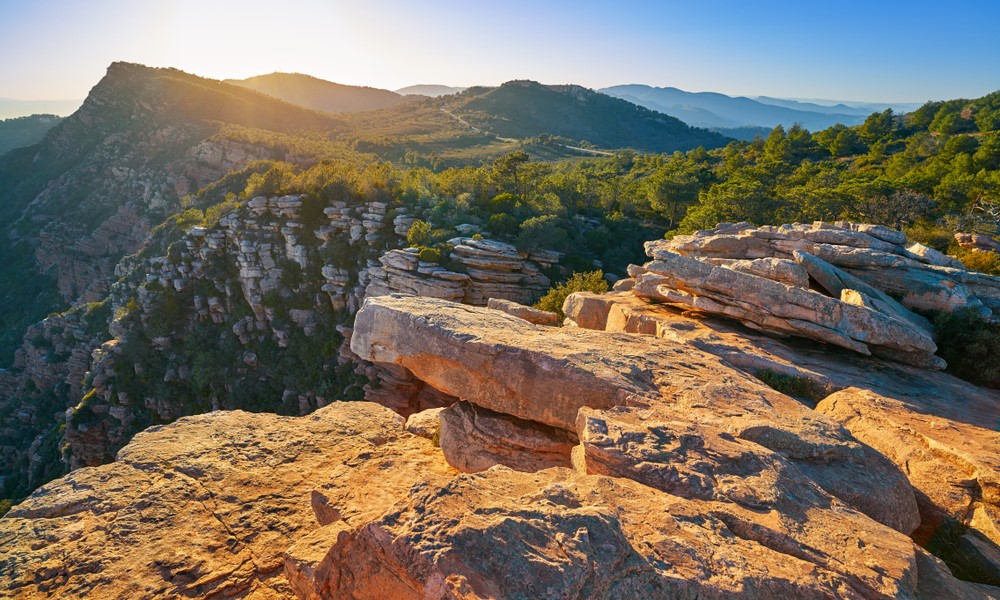
Serra Calderona is a mountainous area near Valencia. The natural park is accessible to tourists of all skill levels, as well as children and pets. Outdoor enthusiasts will appreciate the mountain peaks from 600 to 900 m, which offer stunning views of the Mediterranean Sea and the coastal plains. There are also many trails and a tourist center.
Serra Calderona has an outstanding heritage, with archaeological sites, castles, traditional farmhouses, monasteries and monastic communities. In these mountains, you can see the remains of civilizations that inhabited our lands from the Paleolithic era, through the Bronze Age, Iberian culture, Roman, Arabic and medieval periods.
To enjoy nature and relax, the park provides picnic areas with barbecues and grill stations. There is also a bar, a toilet, public tables, a zone with drinking water and garbage cans.
To get to the park from Valencia, you need to take a bus to the city of Albalat dels Tarongers or take a train to Sagunto. The journey takes about 40 minutes, one-way tickets cost from three euros (about 240 rubles*).
*Prices are current at the time of publication.

